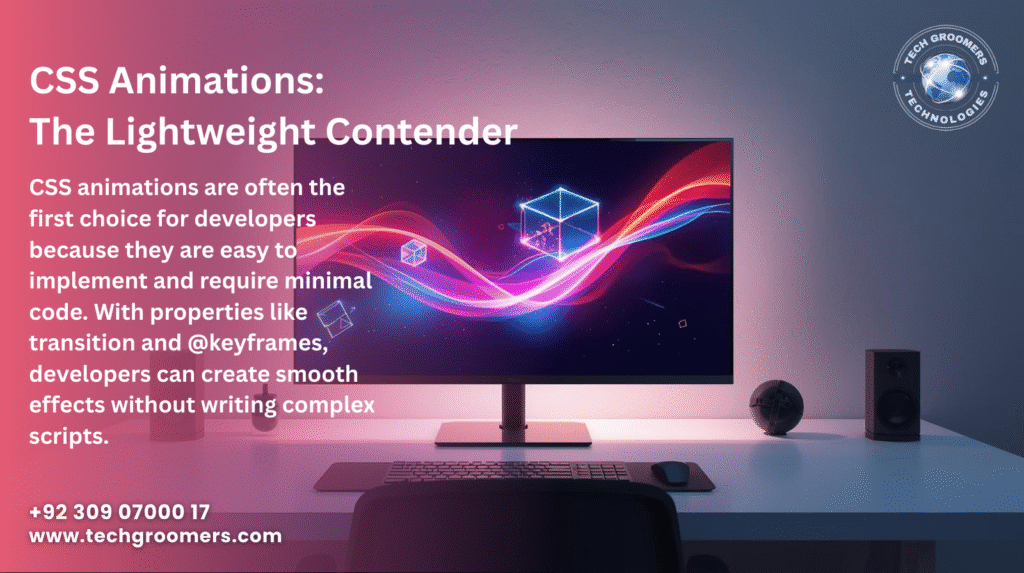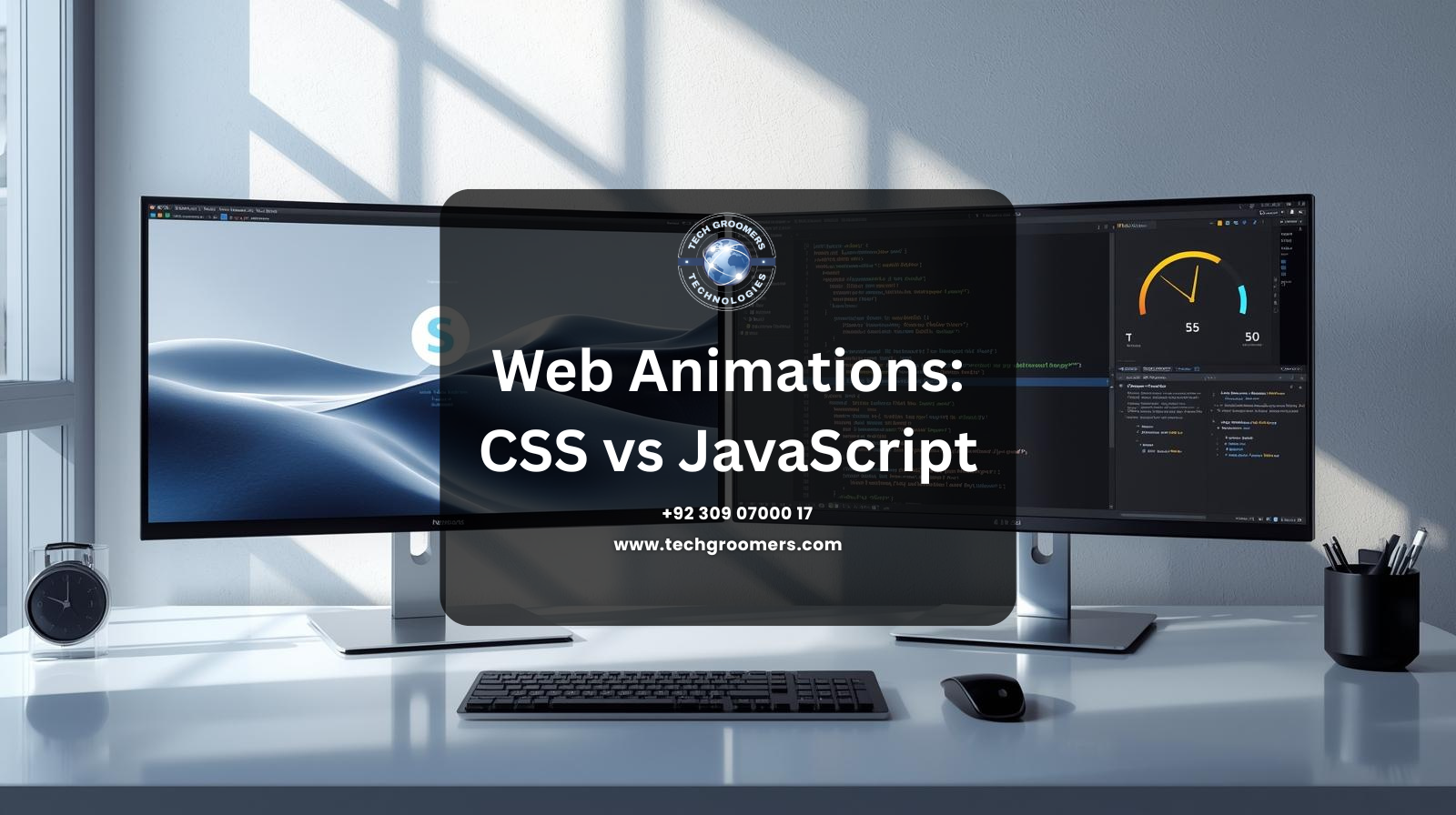If you’ve ever scrolled through a modern website and felt amazed at how smooth, interactive, and visually appealing it looked, you’ve probably experienced the magic of web animations. From subtle hover effects to dynamic transitions and eye-catching interactive elements, animations have become an essential part of web design. But behind the scenes, the debate continues: should developers rely on CSS animations or JavaScript animations to achieve the best performance?
In this blog, we’ll explore the future of web animations, compare CSS and JavaScript for performance, and highlight how businesses, developers, and learners can make smart choices with guidance from TechGroomers.
Why Web Animations Matter
Animations are more than just pretty visuals. They enhance user experience, provide visual feedback, and guide users through complex interfaces. For businesses, effective animations can improve engagement, boost conversion rates, and create a stronger brand identity. As websites compete for user attention, delivering smooth animations has become a critical factor in building trust and keeping visitors hooked.
CSS Animations: The Lightweight Contender

CSS animations are often the first choice for developers because they are easy to implement and require minimal code. With properties like transition and @keyframes, developers can create smooth effects without writing complex scripts. Some of the advantages include:
- Simplicity: Easy to use with just a few lines of CSS.
- Performance: CSS animations are optimized by the browser’s rendering engine, often making them faster and more efficient.
- Hardware acceleration: Many CSS animations can be offloaded to the GPU, reducing CPU load.
However, CSS animations also have limitations:
- Less control over complex sequencing.
- Limited interactivity.
- Challenging to synchronize with user actions beyond simple states.
JavaScript Animations: The Powerful Alternative
JavaScript animations provide much greater flexibility and control. Using libraries like GSAP (GreenSock Animation Platform) or native APIs such as requestAnimationFrame, developers can craft complex motion effects, timelines, and interactive features. Benefits include:
- Precision control: Developers can define exact timing, easing, and sequencing.
- Dynamic interactivity: Animations can respond to real-time user input.
- Advanced features: Complex storytelling, 3D effects, and data-driven motion become possible.
Yet, JavaScript animations can be more resource-heavy. Poorly optimized code may cause frame drops, reduced responsiveness, and high CPU usage, especially on low-powered devices.
CSS vs JavaScript: Performance Showdown
When comparing CSS and JavaScript animations, performance is often the deciding factor. Here’s a breakdown:
- For simple animations (hover effects, fades, slide-ins): CSS is usually faster and smoother.
- For complex animations (timelines, chained effects, reactive motion): JavaScript provides unmatched flexibility.
- Performance optimization: Both CSS and JavaScript benefit from using GPU acceleration, minimizing layout recalculations, and reducing DOM manipulation.
In the future, hybrid approaches may dominate, where CSS handles lightweight transitions while JavaScript manages advanced motion logic.
The Future of Web Animations
As web technologies evolve, the line between CSS and JavaScript animations continues to blur. Frameworks and APIs are making it easier to combine the strengths of both. The focus will increasingly shift toward:
- Performance-first design: Prioritizing smooth, responsive animations across devices.
- Accessibility: Ensuring animations enhance usability without overwhelming users.
- Consistency: Creating unified animation systems across websites and apps.
- AI-powered animations: Tools that generate smart, adaptive motion automatically.
For businesses and developers, staying updated with these trends is essential to delivering cutting-edge digital experiences.
How TechGroomers Makes It Easy
At TechGroomers, we believe in empowering learners, professionals, and businesses with the right knowledge and skills. Whether you’re a beginner exploring CSS transitions, or an advanced developer mastering JavaScript libraries like GSAP, our courses and training programs help you stay ahead of the curve. We focus on:

- Hands-on learning with real-world projects.
- Performance optimization techniques for both CSS and JavaScript.
- Latest tools and frameworks to craft next-generation animations.
- Practical guidance on building engaging, high-performance websites.
With TechGroomers, you won’t just learn how to animate—you’ll learn how to create experiences that captivate users and perform flawlessly.
Final Thoughts
The future of web animations isn’t about choosing CSS or JavaScript—it’s about understanding when to use each for the best results. CSS offers efficiency and simplicity, while JavaScript delivers power and control. By combining both approaches, developers can design animations that are visually stunning, highly inter




Leave a Reply